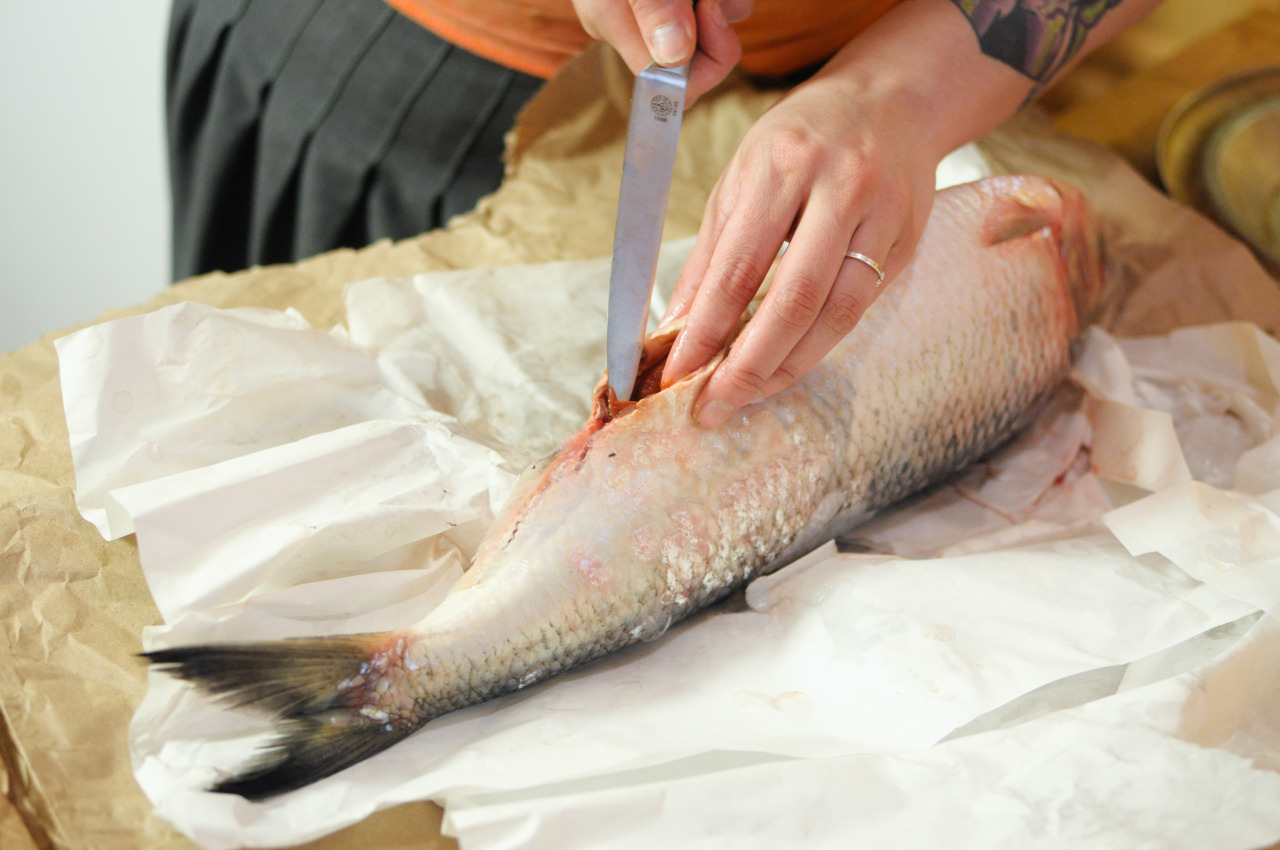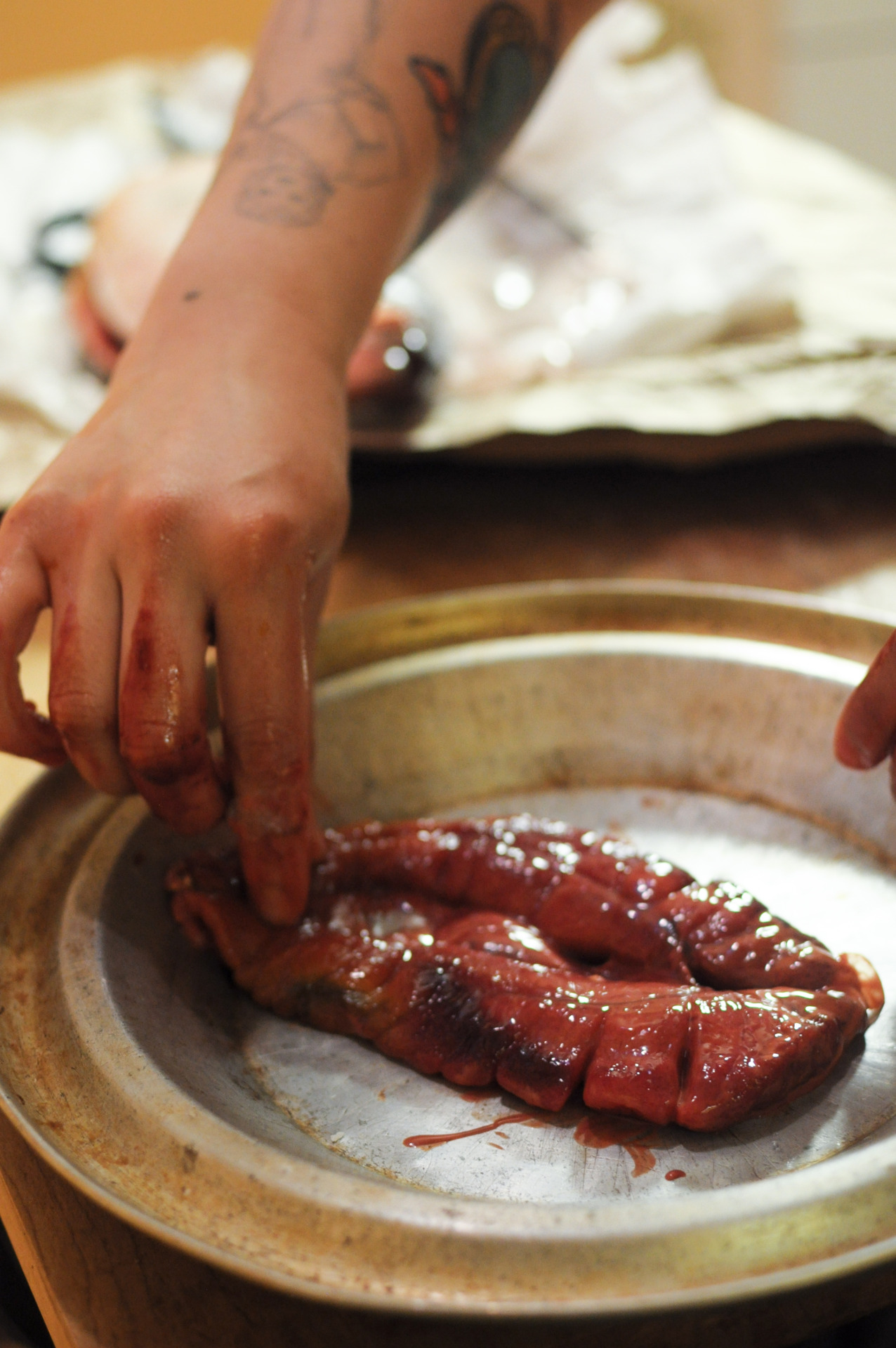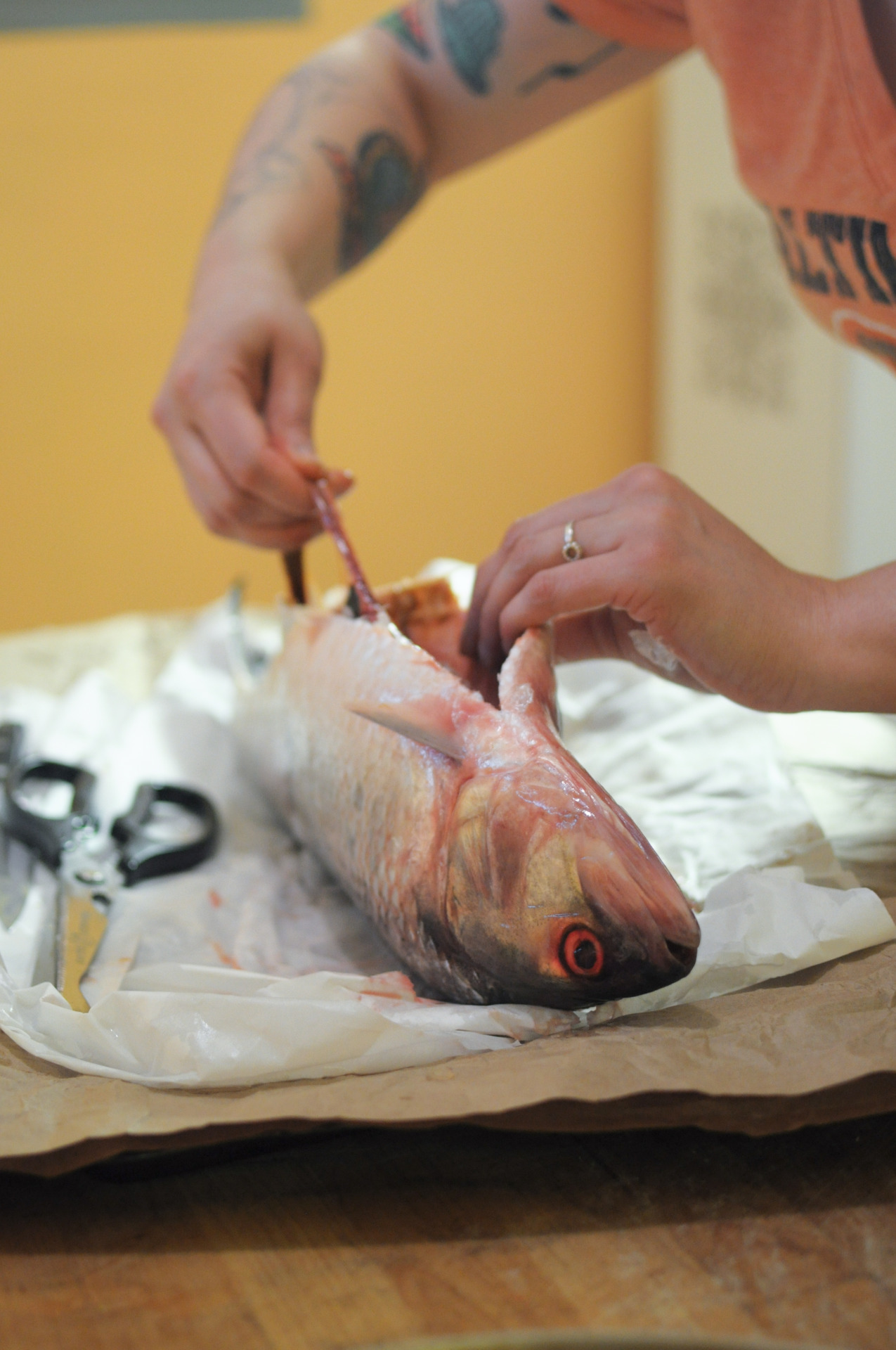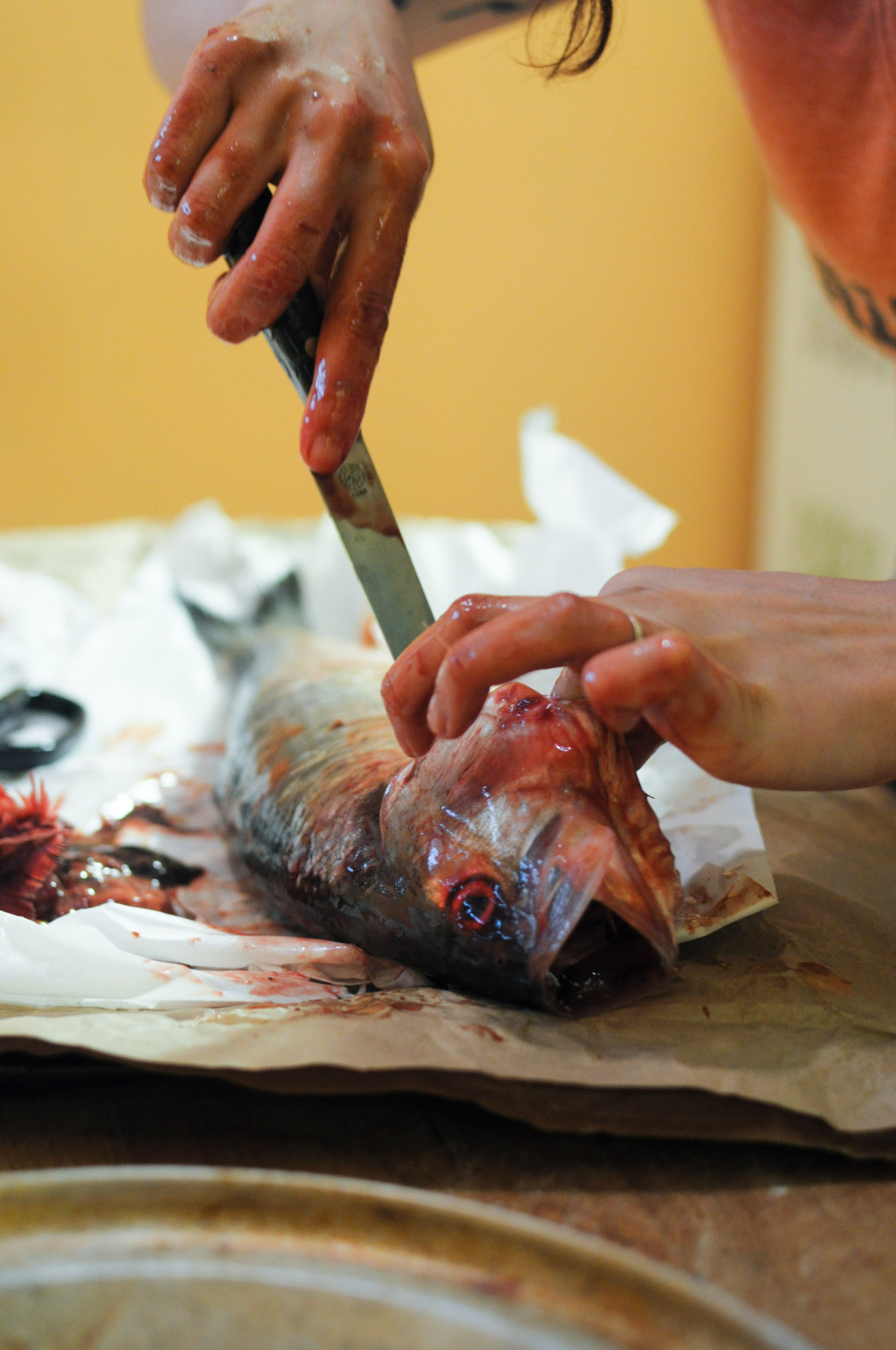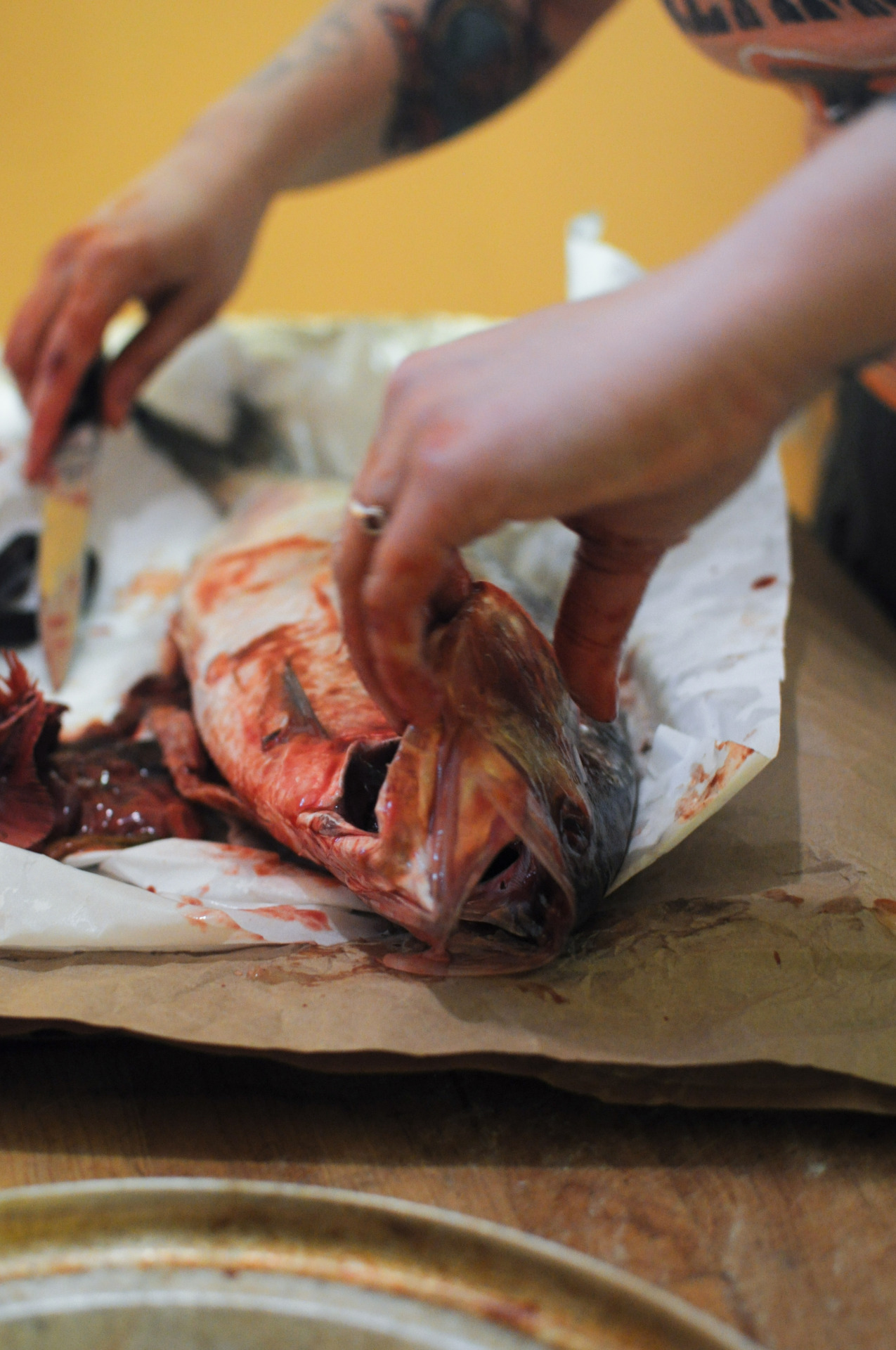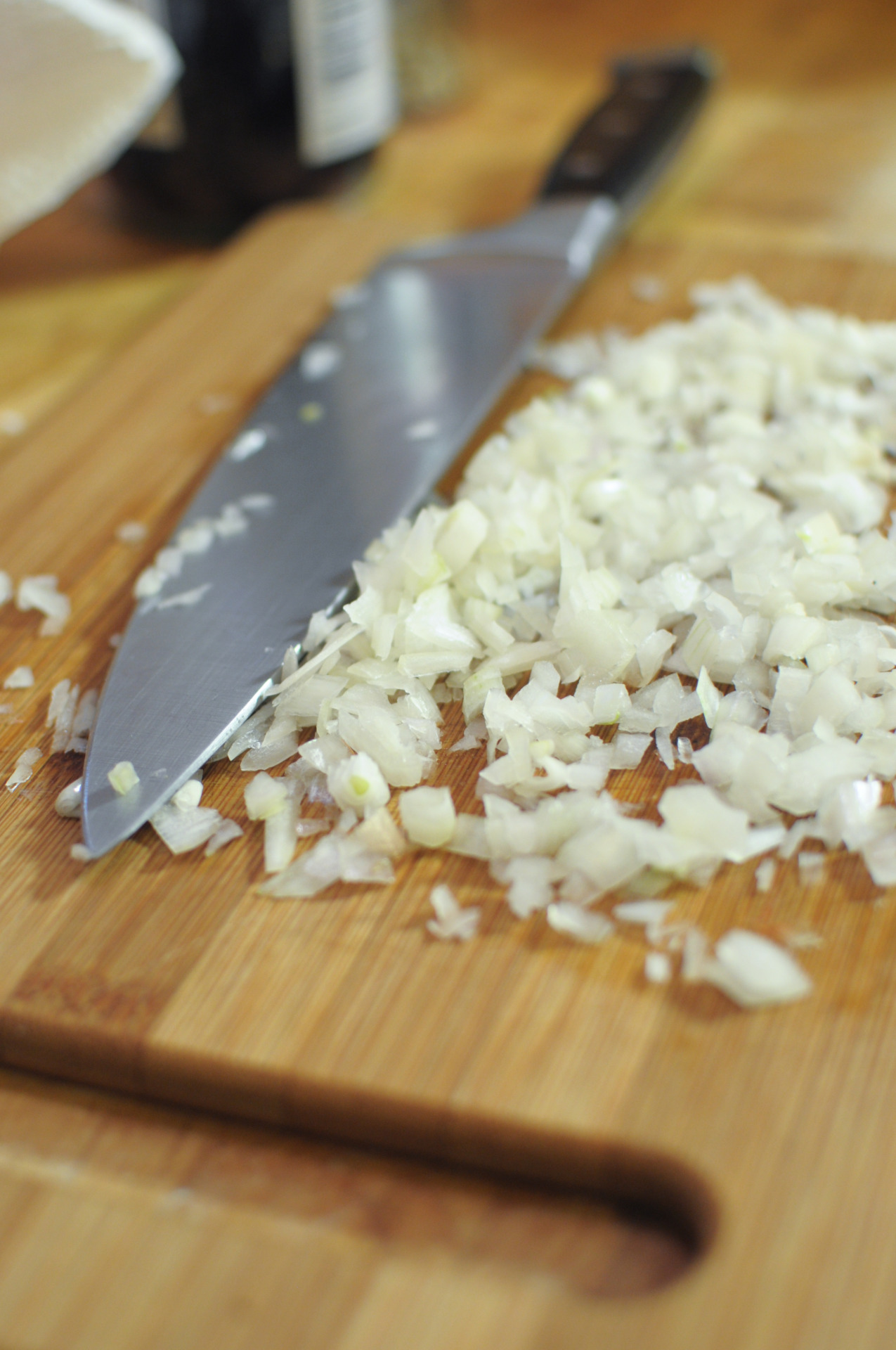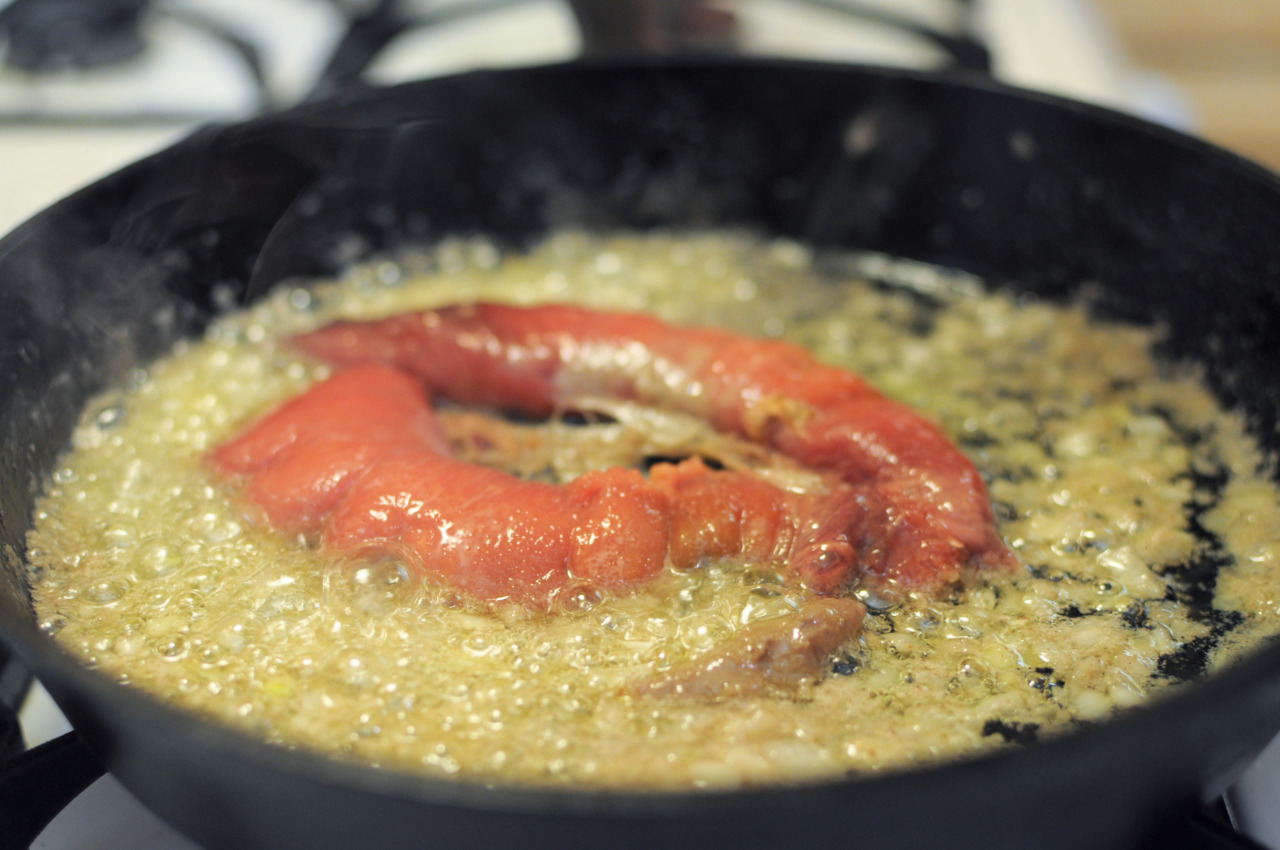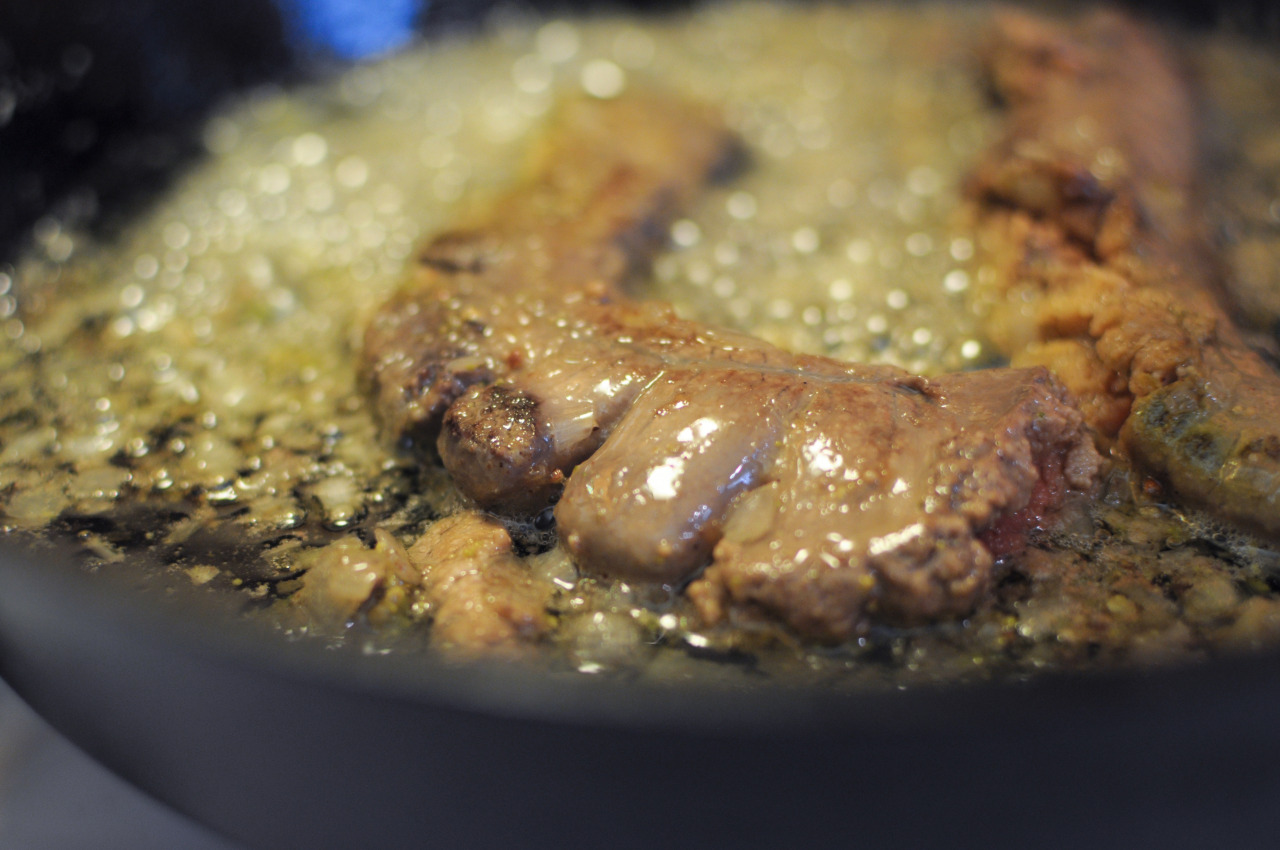
In 2007, my friend hosted a “gross food” party. Everyone was requested to bring something from their childhood, a family favorite perhaps, something that might strike outsiders as a little gross.
Ketchup Fried Rice was enjoyed. There was Ribs & Kraut. Some bozo who didn’t catch the net brought Popeyes. I took the opportunity to slice up a block of RAPA Scrapple, cook it to ideal crispness on each side, and then fold each slice in a piece of un-toasted white bread.
It was in this manner that scrapple was served at my grandparents’ trailer in Chincoteague, to a line of kids and about half as many adults before the tedious ritual of beach preparations or fishing trips.

Scrapple, Lexington Market
I checked with my grandmother and she says that she remembers eating scrapple her whole life. She also remembers ‘Panhas’ as a distinct but similar food from scrapple with a higher cornmeal content, whereas William Woys Weaver’s wonderful book “Country Scrapple” gives the impression that they are in fact the same thing.
My grandmother also stated that she believed scrapple originated in the South. This is a common misconception but scrapple is a Pennsylvania, Delaware and Maryland thing – with possible Native American and definite German origins, as well as regional adaptations and variations such as the Cincinnati specialty “Goetta,” featuring oats in lieu of cornmeal. Early recipes often featured buckwheat flour, and the selection of organs and meats used seems to vary to this day.
According to Weaver, the oldest datable recipe for American scrapple comes from Elizabeth Ellicott Lea, a Marylander (as the name makes clear) and Quaker who published her cookbook “Domestic Cookery” in 1845.
It is also stated that “the oldest scrapple maker still in business is Hemp’s in Jefferson Maryland,” founded in 1849.
Before that time, scrapple was made at home, often outdoors and in conjunction with sausage making.
“One [industrial era scrapple manufacturer] company does merit a mention, as it is a reminder that Baltimore is as much a scrapple town as Philadelphia. (Mencken disagrees – ed.) Henry Green Parks Jr. (1917-89), an African-American. began Parks Sausage Company in Baltimore in 1951. He converted an old dairy plant and soon put himself in open competition with firms like Rapa, which was essentially a Baltimore label. “More Parks sausages, Mom,” on radio advertisements is still remembered by many people today. The well-known Parks scrapple was the only Afircan-American brand to become a household word on a regional level.“ – Country Scrapple, William Woys Weaver

Parks went under and was bought by Dietz & Watson in 1999.

Source: Observer-Reporter, 1996
I’ve long held a defensiveness over the bad rep that Scrapple gets due to its name, and in the past I’ve jumped on the opportunity to serve it right. This however was my first time making it from scratch.
I started with a recipe for Scrapple from Mrs. J Morsell Roberts from “Eat, Drink & Be Merry in Maryland” but I also referenced a recipe from “Maryland’s Way,” the Hammond-Harwood House cookbook, and one from ”Chesapeake Bay Cooking“ by John Shields. His book is an excellent cookbook in itself but a valuable cross-reference for some of these minimal old recipes.

It’s lucky for us that Scrapple is so visually appealing because I haven’t found any good images for Mrs. or Mr. J Morsell Roberts.
The extent of my information is this:
Mr. J. Morsell Roberts died [1937 at] Calvert County Hospital.
Mr. Roberts was a member of an old Calvert county family, a son of the late Richard Roberts and Henrietta Morsell Roberts, and was very well known…. He was the husband of Mrs. Mollie Bond Roberts. – Calvert Gazette on mdhistory.net
I picked up a jowl at Lexington Market but I had to get the liver from a butcher shop. Perhaps I could have just gotten both at the latter and worked without the smoky jowl. I rinsed it, and the smoke flavor isn’t bad or overwhelming but it isn’t necessary.

Hog parts, Lexington Market
I also made my scrapple quite fatty. This was my first hog jowl experience. They are all fat. Weaver claims that the amount of fat included in scrapple increased over time due to various cultural factors. Mine may have taken it to new extremes. His book contains many recipes for scrapple. I intend to try some more this summer.
Lastly, my scrapple was a bit mushy. In a way, the mushiness ensured that it must be cooked properly, as it was impossible to flip until it had been well-crisped on one side.
There could be more to explore with scrapple in the future. Frankly, before reading Weavers book I had underestimated its very Maryland-ness. Any remnant of shame over this repulsive delight is purged from within me.

Recipe:
- 1 hog jowl
- 1 pork liver
- salt
- pepper, black
- sage and/or other seasonings of choice
- cornmeal
- flour
Boil the jowl until the meat falls from the bone. (I did this in the slow cooker and added some onions I had to add flavor to the stock. Removed the onions later.) Save liquor it is boiled in. In a separate dish, soak the liver, changing water several times. Boil liver in separate water from jowl; throw this water away. Run all the meat through sausage cutter, then throw it in the reserved stock, season with salt, pepper, sage or other desired seasonings. Thicken with cornmeal the consistency of thin mush. Chill in a pan. To fry, heat a skillet with a very small amount of oil. Dredge slices in flour and fry until very crisp, turning once.












(Recipe Adapted from Eat, Drink and Be Merry in Maryland, Maryland’s Way, and Chesapeake Cooking with John Shields)






































